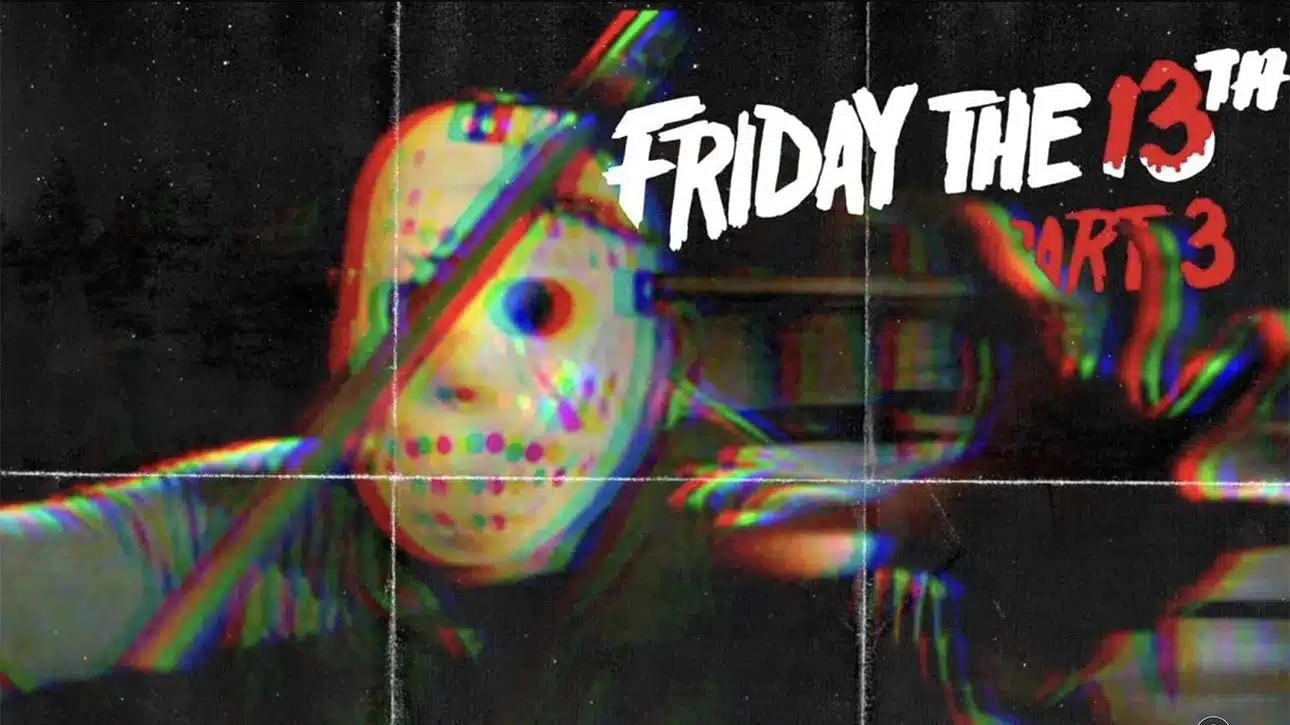Copyright popmatters

Friday the 13th: Part III carries the tagline “A New Dimension of Terror”, a nod to its 3-D gimmick, but what is this “third dimension” really? Beyond the visual, it’s a deeper, darker layer of horror: sexual violence, predation, and the latent threat lurking beneath Jason’s monstrous exterior. Jason Voorhees is a potential sexual predator, possibly a rapist in Part III, with roots tracing back to Part II. In that film, his evolving behavior hints at disturbing autonomy and sexual aggression that, in today’s parlance, we deem “incel“. Jason’s presence is already known in the area before Steve Miner’s Friday the 13th: Part II, released in 1982, begins, as the campfire tales warn of a lurking killer. In his first full appearance in Friday the 13th: Part II (Miner, 1981), Jason’s motivations take shape beyond pure animalistic rage. Assuming readers are familiar with this horror film anthology, after Alice (Adrienne King) kills his mother, Pamela Voorhees (Betsy Palmer), Jason’s focus sharpens into a single-minded pursuit of revenge. He stalks Alice with deliberate intent, making a great effort to follow her all the way to her home; a clear demonstration of emerging strategic thinking rather than mindless violence. This calculated behavior suggests Jason (Richard Brooker) is developing unsettling autonomy, capable of planning and executing a targeted attack. His violence here is driven by a dark obsession with punishing the one who ended his mother’s life. Jason’s transformation in Friday the 13th: Part III, shaving and changing his look, underscores his evolution: he is no longer a mere feral brute but a calculating predator blending human mimicry with monstrous intent. His violence grows increasingly personal and strategic, with acts like removing the kettle in Friday the 13th: Part II, indicating control over domestic spaces. Jason’s Liberation from His Mother In Friday the 13th: Part II, Jason’s shack serves as a shrine to his deceased mother, Pamela Voorhees, housing her preserved head. This space is both a site of worship and a symbolic prison. Jason’s connection to his mother dominates his world, restraining his actions and possibly his impulses. The shack’s claustrophobic atmosphere reflects Jason’s trapped state, where his violent urges coexist with a deep-seated shame, particularly regarding any emerging sexual feelings. He may have felt unable or unwilling to act on these impulses under the watchful presence of his mother’s remains. Friday the 13th: Part III marks a significant shift as Jason moves his base of operations to the barn, a more spacious and autonomous territory free from his mother’s immediate influence. The barn functions as Jason’s new lair, a domain where he exercises more devious and personal control. Here, he commits intimate and brutal acts of violence, such as the savage killing of the biker Ali (Nick Savage), where Jason cuts off his hand before hacking him to death. This transition from shack to barn symbolizes Jason’s evolution from a boy trapped by maternal control to a sovereign predator carving out his own space, where he can express his dark sexual desires and incel frustrations more openly. Jason’s Sexual Frustration Jason has witnessed nudity and sexual activity. In Friday the 13th: Part II, he violently kills a couple in bed. This reaction likely stems from deep frustration or confusion, having never experienced intimacy himself. His brutality may be fueled by twisted longing or resentment toward what he cannot have. In Friday the 13th: Part III, Jason’s killing of Andy is especially brutal and intimate. Andy is killed while upside down and possibly struck in the groin, intensifying the sense of personal and sexual violence. Debbie (Tracie Savage), who is pregnant, is in the next room. Jason’s violence here seems charged with jealousy and rage toward Andy’s normalcy and sexual vitality. This act reveals Jason’s complex mix of desire, frustration, and a dark assertion of power. Unspoken Horror and Sexualized Violence Jason’s attack on Chris (Dana Kimmell), the Final Girl in Friday the 13th: Part III, is crucial yet deliberately understated on-screen, intensifying the horror by leaving much to the imagination. Unlike earlier kills, this encounter carries an increased sense of personal and sexual threat. Chris’ terrified struggle and the framing of the scene heighten the sense of bodily threat beyond death, suggesting an attempt to exert control over her in a profoundly intimate way.The moment at the end of the film when Jason lifts his mask and grins at Chris carries a perverse intimacy; a silent, disturbing acknowledgment heavy with sexual undertones and fear. He recognizes her from the attack earlier, and she recognizes him. This glance blurs the line between predator and sexual aggressor, deepening the film’s undercurrent of menace. The Child Trapped in a Man’s Body Ginny (Amy Steel), in Friday the 13th: Part II, offers insight into Jason’s nature. She calls him “a frightened retard” and “a child trapped in a man’s body”. These descriptions underscore his arrested development and the tension between his monstrous acts and the innocence he has lost. Such language frames Jason as a being caught between primal violence and confused humanity. The Mask and the Contrast of Virgins Shelly Finkelstein (Larry Zerner), introduced in Friday the 13th: Part III, offers a sharp contrast to Jason. Shelly is an awkward, nervous young man — a comic relief character who is unmistakably a virgin. His fumbling with women and social anxiety highlight his innocence and vulnerability. Shelly’s connection to Jason is symbolized through the iconic hockey mask — Jason’s terrifying emblem — which Shelly keeps and even uses for pranks. The mask, while a source of laughter for Shelly, embodies pure terror in Jason. Shelly’s playful handling of the mask contrasts with Jason’s lethal seriousness and chilling autonomy. Shelly’s pranks, often crude and disruptive, reflect a different kind of invasion — social and would-be sexual — contrasting sharply with Jason’s progression from voyeur to active predator. The mask Jason appropriates becomes both a literal and symbolic shield, transforming Shelly’s lighthearted prank scare into cold, predatory violence. The mask thus creates a bridge between innocence and horror, symbolizing two types of virginity: Shelly’s human sexual inexperience and Jason’s monstrous, predatory virginity. Shelly “wears” the mask as a joke, but Jason embodies its full terrifying power. The Third Dimension of Terror The tagline “A New Dimension of Terror” gains new meaning through this lens. The film’s 3-D technology adds physical depth, but the true “third dimension” might be the implicit sexual threat Jason embodies. His growing autonomy, voyeurism, and stalking introduce psychological and sexual horror layers beyond gore. Jason in Friday the 13th: Part III is a virgin predator, a lurking threat charged with disturbing incel sexual undertones. His relationship with the mask and Shelly highlights a contrast between innocence and menace. Jason’s behavior reveals a dark curiosity about sex paired with brutal control and domination. This sexualized reading deepens the horror, presenting Jason as a figure of repressed, dangerous sexuality, the incel. Friday the 13th’s Jason Voorhees is a killer whose terror extends beyond blood to the body itself.



